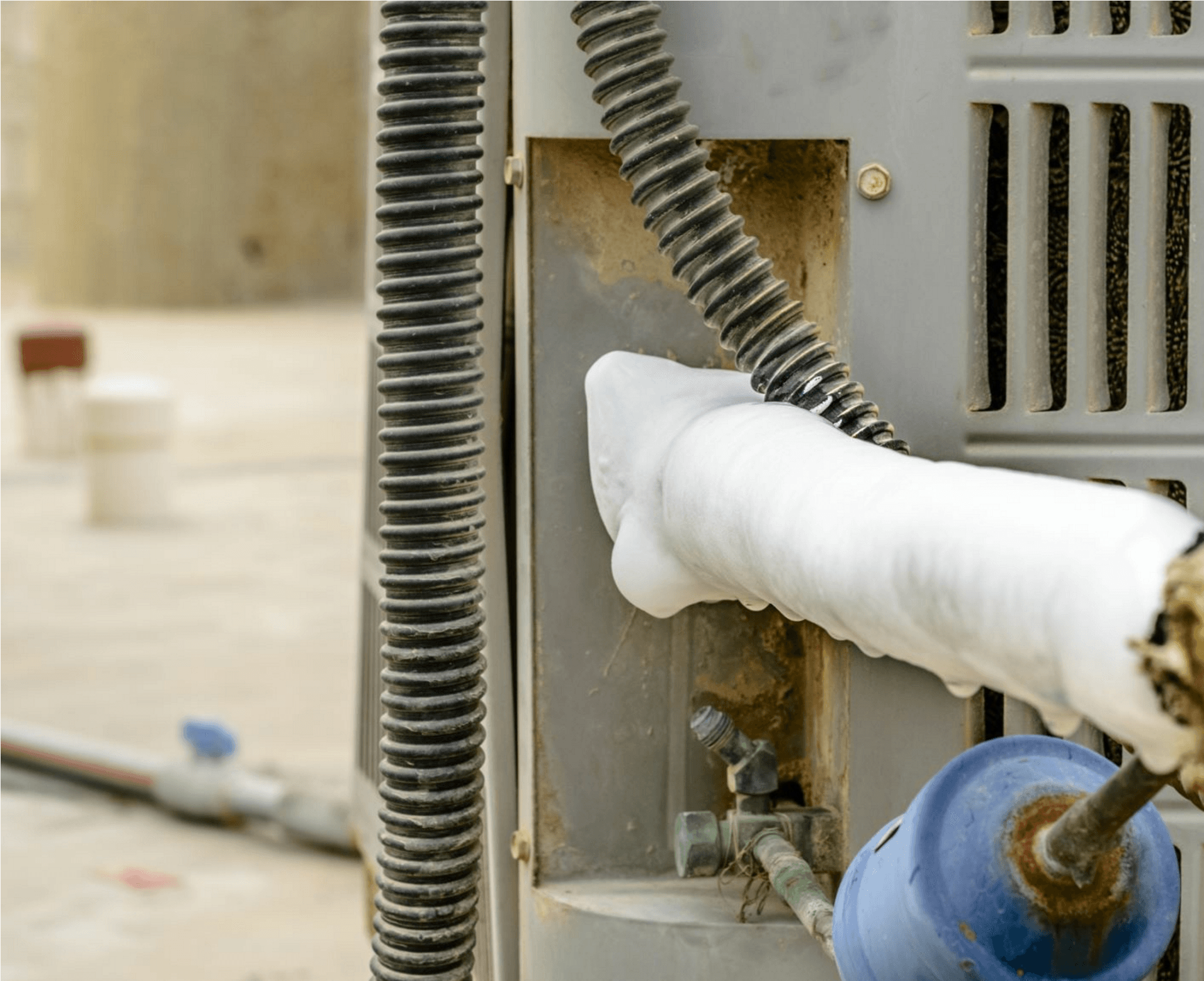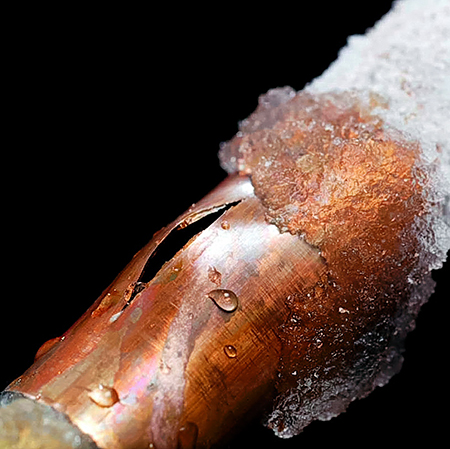What're your thoughts regarding How can I fix an air conditioner’s frozen pipe??

Intro
Finding that your a/c pipeline is frozen can be worrying, particularly during warm summer months when you depend on your ac unit one of the most. Understanding what to do in such a scenario is vital to stop further damage to your cooling system and ensure your comfort inside your home.
Understanding the Causes
Numerous elements can contribute to the freezing of an air conditioner pipe. Recognizing these causes can assist you deal with the issue properly.
Absence of Airflow
One typical root cause of an icy AC pipe is inadequate air movement. When the air movement over the evaporator coil is restricted, it can create the coil to go down below freezing temperature, causing ice development on the pipeline.
Reduced Refrigerant Levels
Not enough cooling agent degrees in your air conditioner system can also result in a frozen pipe. Low cooling agent degrees can trigger the stress in the system to go down, causing the freezing of wetness on the evaporator coil.
Winter Conditions
In cooler environments, freezing temperature levels outside can add to the cold of a/c pipelines. If your AC device is not properly shielded or if there are leaks in the ductwork, cold air can infiltrate the system, triggering the pipeline to ice up.
Dirty Air Filters
Dirty or blocked air filters can restrict air flow in your a/c system, resulting in numerous concerns, including an icy pipeline. It's important to replace or clean your air filters routinely to ensure appropriate air movement and prevent ice accumulation.
Signs of a Frozen A/c Pipe
Identifying the signs of a frozen air conditioning pipe is important for punctual action.
Minimized Airflow
If you see a significant decrease in air flow from your vents, it can suggest an icy pipe.
Ice Buildup on the Pipe
Noticeable ice build-up on the refrigerant line or the evaporator coil is a clear sign of an icy AC pipe.
Unusual Sounds from the Unit
Uncommon noises, such as hissing or gurgling, originating from your air conditioning system can indicate that there's ice present on the pipeline.
Immediate Actions to Take
When confronted with an icy air conditioner pipeline, it's essential to act rapidly to avoid additional damages to your air conditioning system.
Turning off the air conditioning
The first step is to shut off your a/c unit to avoid the system from running and exacerbating the concern.
Looking for Blockages
Examine the area around the indoor device for any type of obstructions that might be blocking airflow, such as furnishings or drapes.
Defrosting the Pipe
You can make use of gentle methods like putting towels taken in cozy water around the icy pipeline to assist thaw it slowly.
Safety nets
Taking preventive measures can aid avoid future occurrences of a frozen air conditioner pipe.
When DIY Methods Fail
If your attempts to thaw the pipe or address other problems are not successful, it's time to hire an expert.
Significance of Hiring a Professional HVAC Technician
A qualified HVAC service technician has the knowledge and tools necessary to detect and fix problems with your air conditioner system securely and properly.
Routine Maintenance Checks
Arrange normal upkeep contact a professional HVAC professional to ensure that your AC system is running efficiently.
Changing Air Filters
Regularly replace or clean your air filters to prevent air movement constraints and keep optimal performance.
Protecting Exposed Pipes
If your air conditioner pipes are subjected to cold temperatures, think about protecting them to stop freezing throughout winter season.
Looking For Professional Help
If DIY methods stop working to deal with the problem or if you're unsure regarding exactly how to proceed, it's best to look for assistance from a qualified HVAC professional.
Verdict
Managing a frozen air conditioner pipe can be a frustrating experience, but recognizing just how to respond can assist decrease damages and bring back convenience to your home. By comprehending the reasons, recognizing the indicators, and taking punctual action, you can properly attend to the concern and prevent future occurrences.
What to Do If Your AC Line Is Frozen
Make Sure All Supply and Return Air Vents Are Open
If you notice problems with airflow, the first thing you should do is check your supply and return vents. Supply vents distribute clean, conditioned air throughout your home. As this air becomes stale, it’s pulled into the return vent, where it’s reconditioned before being sent back out through the supply vent.
When these vents are closed, air won’t flow in the home. Before examining your AC, check the vents in every room and ensure they’re all open.
Check for a Dirty Air Filter
Another possible cause of limited airflow is a dirty air filter. Your air conditioner’s filters catch elements you don’t want to breathe in, such as dirt and dust. Over time, filters can become clogged, ultimately blocking air from flowing in and out. The lack of airflow can then cause the entire coil to freeze and will completely restrict any air from moving through it. The AC may need to be powered off for one to two days to allow the coil to thaw after replacing the filter to allow proper functioning of the unit. This debris can also accumulate on your AC’s evaporator coil, requiring a more serious repair. In general, air filters should be cleaned regularly (about every two weeks).
Assess Your Outdoor Unit
In addition to checking your AC, assessing the outdoor unit is a good idea. Also known as the condensing unit, it works with your interior unit to release heat outside. An issue with the outdoor unit can result in rising internal temperatures.
Overgrown Shrubs or Clogged Leaves
From leaves and twigs to shrubs and debris, there’s no shortage of outdoor elements that can accumulate around your condensing unit. When these elements get lodged inside the unit, they can block airflow. Fortunately, removing the blockage can solve the problem.
Sounds of a Broken Fan
Shrubs and leaves aren’t the only things that can impede your outdoor unit’s airflow. If the fan is broken, the unit won’t be able to properly get rid of heat — which means the internal temperature won’t go down. First, make sure the fan is spinning. If it is, check for the following sounds of a broken fan:
Buzzing Rattling Screeching Hissing Clicking Preventative Measures
Nobody wants to deal with a frozen AC line. In addition to causing problems with your air conditioner, they require professional repairs. On the bright side, there are preventative measures you can take to help ensure this issue doesn’t arise in the first place.
https://www.coopergreenteam.com/blog/what-to-do-if-ac-line-frozen

Hopefully you enjoyed our excerpt about How can I fix an air conditioner’s frozen pipe?. Thanks so much for taking time to read through our posting. Are you aware of someone else who is interested in the subject? Why not promote it. I praise you for your time. Don't forget to check our blog back soon.
Services